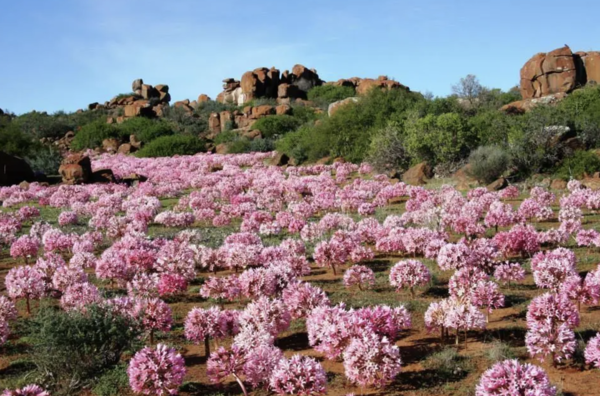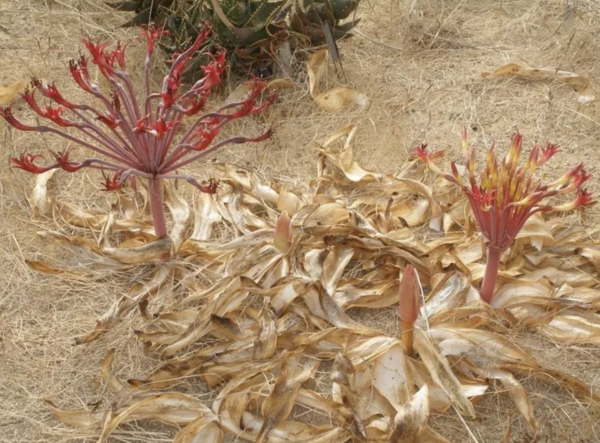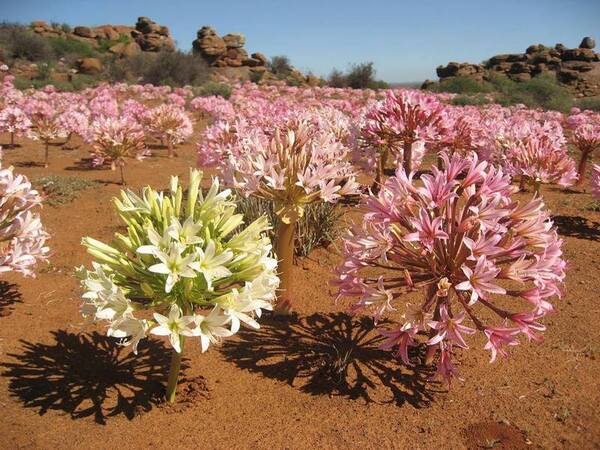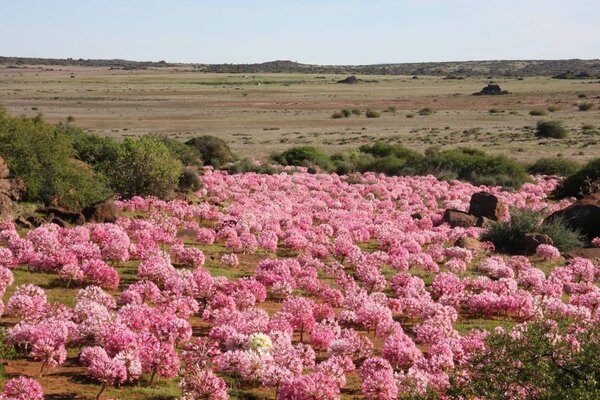If you're a fan of unique and dramatic blooms, Brunsvigia bosmaniae deserves your attention. Known for its spectacular spherical flower clusters, this native South African plant is a true marvel of nature. Often compared to a dazzling firework display or a perfectly sculpted floral dome, Brunsvigia bosmaniae is as fascinating to botanists as it is captivating to gardeners and nature enthusiasts. Let’s explore the world of this extraordinary species, from its striking appearance to its ecological significance and tips on cultivation.

Belonging to the Amaryllidaceae family, Brunsvigia bosmaniae is a perennial bulbous plant endemic to South Africa, particularly the Western Cape’s arid and semi-arid regions. It is famous for its large, umbrella-shaped inflorescences, which can consist of 20 to 100 individual pink or deep red flowers. When in bloom, it stands tall and vibrant against the dry landscapes, creating an unforgettable visual experience.
Key features of Brunsvigia bosmaniae include:
Flower Color: Shades of pink to red.
Flower Shape: Trumpet-like blossoms arranged in a spherical pattern.
Leaves: Broad, ground-hugging leaves that often dry out before flowering.
Height: Typically 30–50 cm tall when in bloom.

Brunsvigia bosmaniae is native to South Africa’s Western Cape, thriving in dry grasslands and rocky terrains. These regions experience a Mediterranean climate with wet winters and dry summers, making the plant well-adapted to drought conditions.
This species prefers:
Sandy or rocky soils with excellent drainage.
Open spaces with full sun exposure.
Winter rainfall patterns, followed by dry, warm summers.
Pollinator Magnet:
The flowers of Brunsvigia bosmaniae are rich in nectar, attracting bees, butterflies, and even sunbirds. These pollinators play a crucial role in maintaining biodiversity in the region.
Seed Dispersal by Wind:
Once the flowers fade, the plant produces lightweight seeds that are dispersed by the wind, ensuring its spread across the landscape.
Survival in Extreme Conditions:
The plant’s underground bulb acts as a storage unit, allowing it to survive the harsh, dry summers typical of its native habitat. This adaptation ensures its long-term survival in challenging environments.
While this plant is stunning in its native habitat, growing Brunsvigia bosmaniae in a home garden requires patience and attention to detail. Here’s a step-by-step guide:
Ensure full sun exposure, mimicking its natural environment.
Use well-draining soil, such as a sandy or gritty mix.
Plant the bulb with its tip just below the soil surface.
Space bulbs at least 30 cm apart to allow room for the large inflorescences.
During its active growing season (winter and early spring), water sparingly but consistently.
Allow the soil to dry out completely during the summer dormant period.
Brunsvigia bosmaniae can take several years to flower after planting. However, the wait is well worth it when you witness its magnificent blooms.
Overwatering can lead to bulb rot, so it’s essential to let the soil dry out between watering sessions.

Visual Impact:
Few plants can rival the dramatic, spherical flower displays of Brunsvigia bosmaniae. Its blooms create a bold focal point in any garden or landscape.
Cultural Significance:
In South Africa, it is celebrated as a symbol of resilience and natural beauty, thriving in some of the country’s toughest terrains.
Rarity:
Due to its specific environmental requirements, this plant is not commonly found outside its native range, making it a prized addition to any collection of rare or exotic plants.

Like many native species, Brunsvigia bosmaniae faces threats from habitat loss due to urbanization, agriculture, and climate change. Efforts to conserve this plant include:
Protecting its natural habitats through conservation programs.
Raising awareness about its ecological and aesthetic value.
Encouraging sustainable cultivation in botanical gardens and private collections.
Brunsvigia bosmaniae is more than just a pretty flower—it's a testament to the resilience and ingenuity of nature. Whether you're a gardener looking to add a show-stopping plant to your collection or a nature lover intrigued by South Africa's unique flora, this species is sure to captivate you.
As you admire its dazzling blooms, remember that its journey from a hidden bulb in dry soil to a spectacular floral firework is a story of survival, beauty, and the delicate balance of ecosystems. If you’re up for the challenge, growing Brunsvigia bosmaniae in your garden could bring a slice of South Africa’s vibrant wilderness into your home.
animal tags: Brunsvigia-bosmaniae
We created this article in conjunction with AI technology, then made sure it was fact-checked and edited by a Animals Top editor.